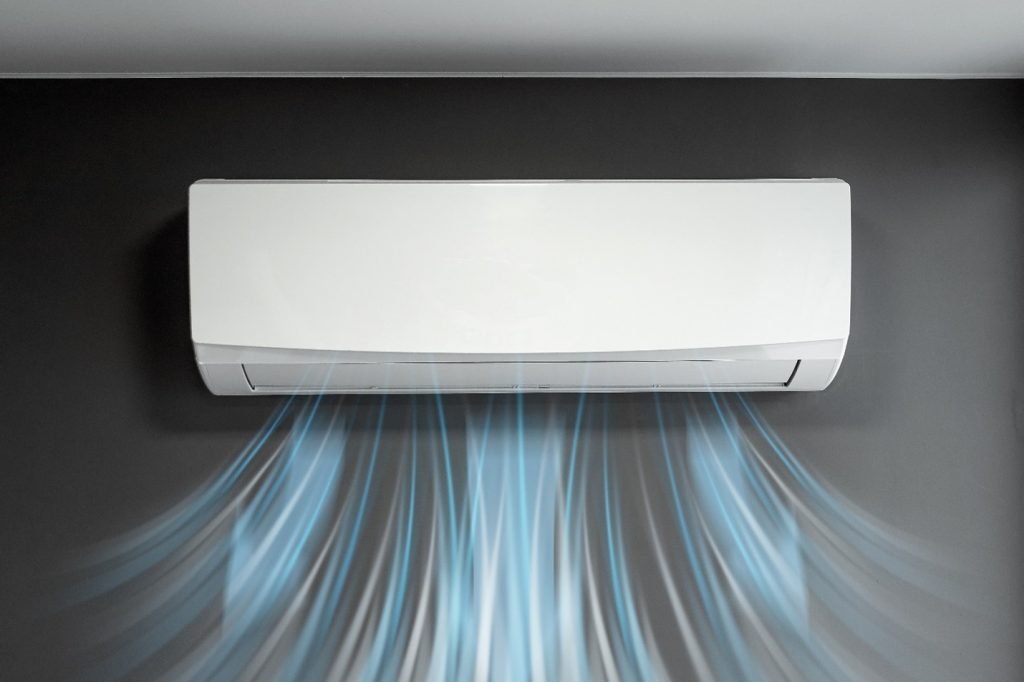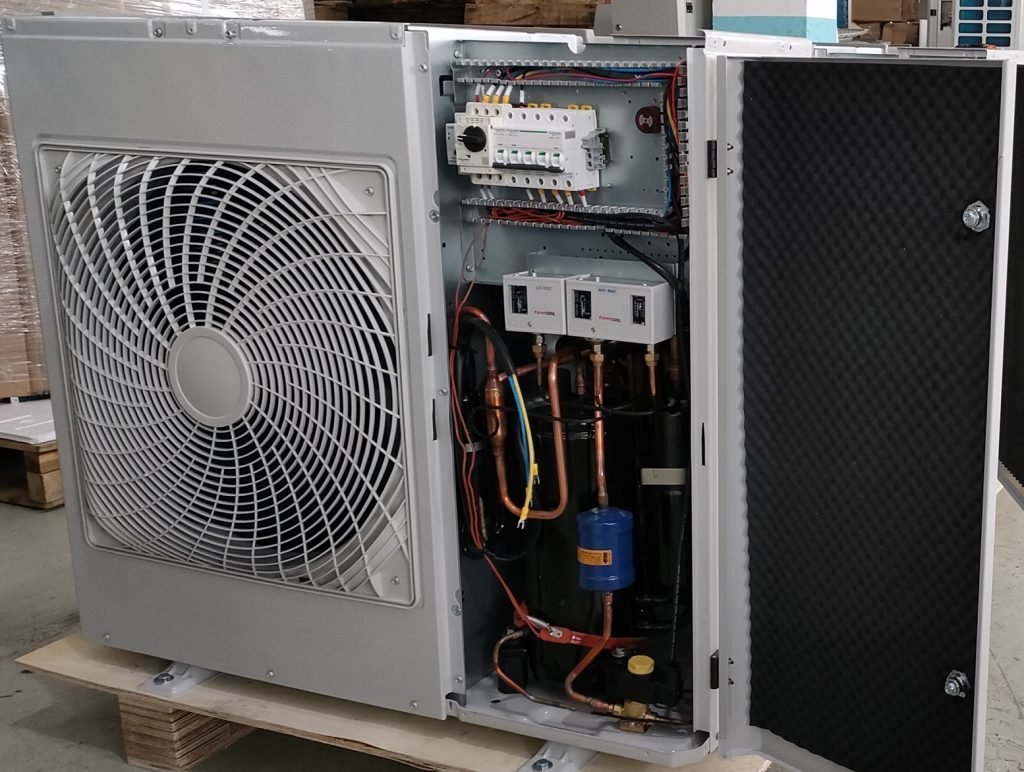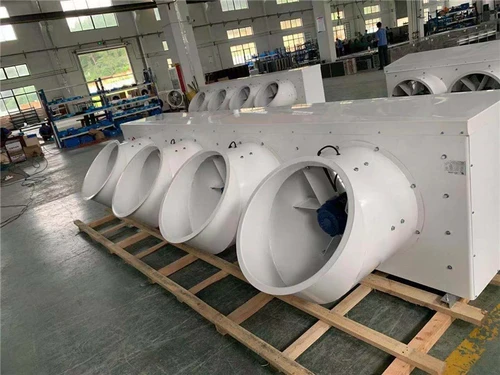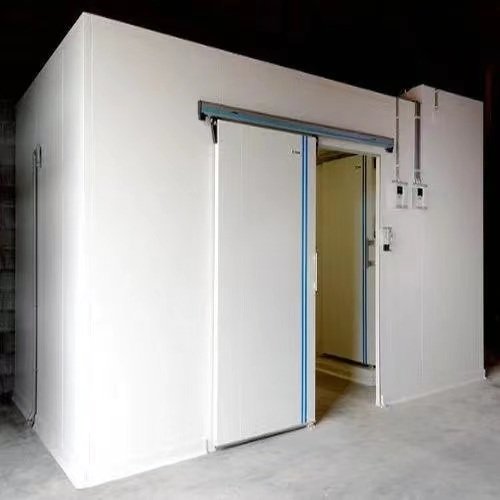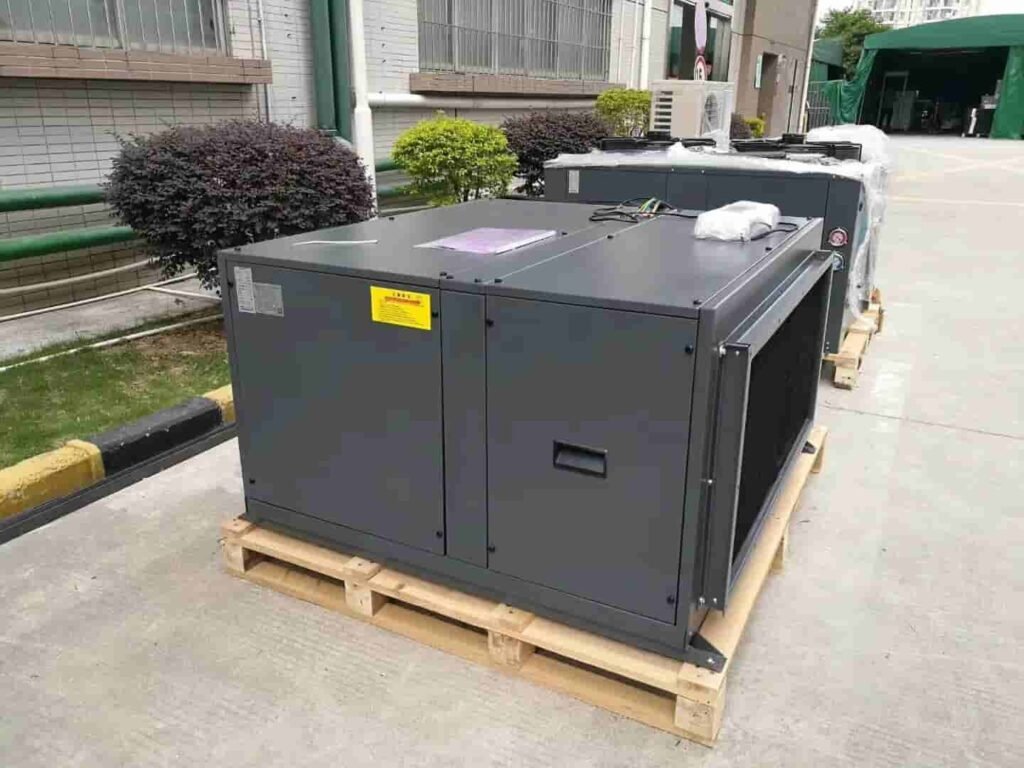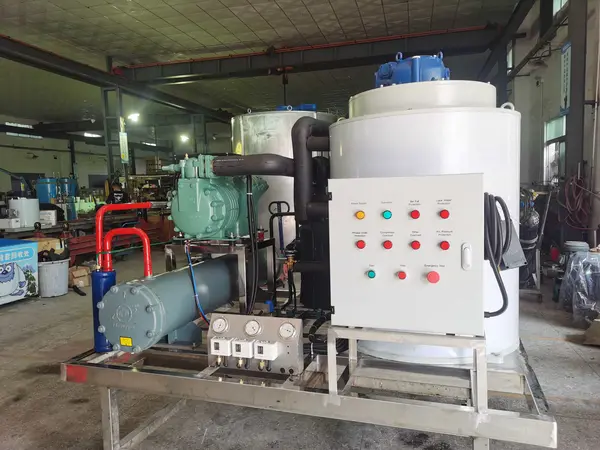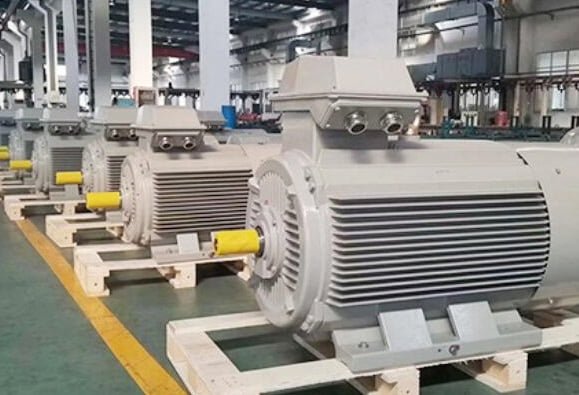In the global cold chain logistics, cold room serves as core hubs, where the reliability of infrastructure directly determines the storage safety and operational efficiency of high-value goods such as food and pharmaceuticals.
Often overlooked, cold room flooring acts as an “invisible guardian,” bearing the critical role of preventing energy loss and resisting structural damage under extreme low-temperature conditions, heavy machinery impact, and prolonged thermal-humidity coupling effects.
As cold chain demand evolves toward ultra-low temperatures (-60℃) and automation, traditional flooring systems frequently suffer from issues such as frost heave cracking and insulation failure due to design defect. These failures result in global economic losses amounting to billions of dollars annually.
The challenge of constructing high-performance flooring systems through scientific material selection, precise construction, and rigorous quality control has become a key technical focus in the field of cold chain engineering.
What is Cold Room Flooring?
Cold room flooring is a multi-layer composite flooring system specifically designed for low-temperature storage environments. It consists of a moisture barrier, insulation layer, structural load-bearing layer, and surface functional layer, ensuring stable performance under extreme temperature fluctuations ranging from -40°C to regular ambient temperatures.
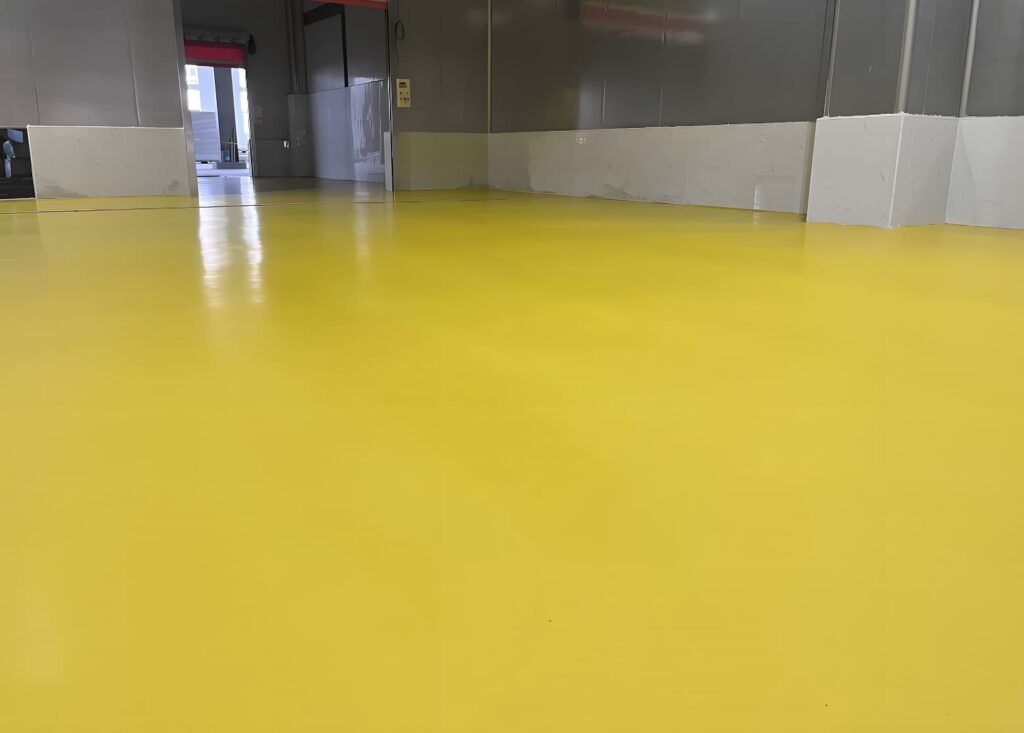
Its primary functions are to prevent thermal loss, support heavy equipment operations, and resist structural damage caused by low-temperature conditions, making it a fundamental infrastructure component for the efficient and safe operation of cold room.
1) Core Functions
1.1 Thermal Insulation
Mechanism: Uses high-density insulation materials such as XPS extruded polystyrene panels and PU polyurethane foam to block heat transfer between the cold room interior and exterior, reduce the refrigeration energy consumption.
Practical Impact: Poor insulation panel can increase energy consumption by 20%-40%, directly affect operational costs.
1.2 Load-Bearing and Compression Resistance
Load Types:
Static Load–Pressure from storage racks and stacked goods (heavy-duty cold room can reach up to 5 tons/m²).
Dynamic Load–Impact from electric forklifts and AGV handling equipment (dynamic load factor ≥1.5).
Material Requirements:
Steel fiber-reinforced concrete (compressive strength ≥30MPa) or reinforced concrete (rebar diameter ≥12mm, spacing ≤200mm).
Failure Risks:
Insufficient load capacity may lead to floor cracking and sinking, potentially cause rack collapse accidents.
1.3 Moisture and Frost Heave Prevention
Low-Temperature Threats:
Groundwater vapor infiltrates the flooring and freezes, expanding by 9%, which leads to floor cracking.
Protective Measures:
Install double-layer moisture barrier (e.g., 0.5mm thick PE film + SBS modified bitumen membrane).
Embed the electric heating system (power ≥25W/m) in the foundation to prevent frost heave.
1.4 Safety and Durability
Anti-Slip Design:
Surface coated with epoxy resin and corundum (friction coefficient ≥0.6) or textured anti-slip patterns (depth ≥2mm).
Corrosion Resistance:
Resists chemical corrosion from saltwater, grease, and de-icing agents in cold chain environments (epoxy coating withstands pH range 1-14).
Lifetime Standards:
High-quality cold room flooring has a lifespan of ≥20 years, which can extend to 30 years with proper maintenance.
2) Importance
2.1 Economic Impact
Energy Efficiency:
Cold room flooring accounts for 15%~30% of total cold room energy consumption. For example, in a 5,000㎡ cold room, exceeding the thermal transmittance standard by 0.1W/(m²·K) can increase annual electricity costs by 30,000USD.
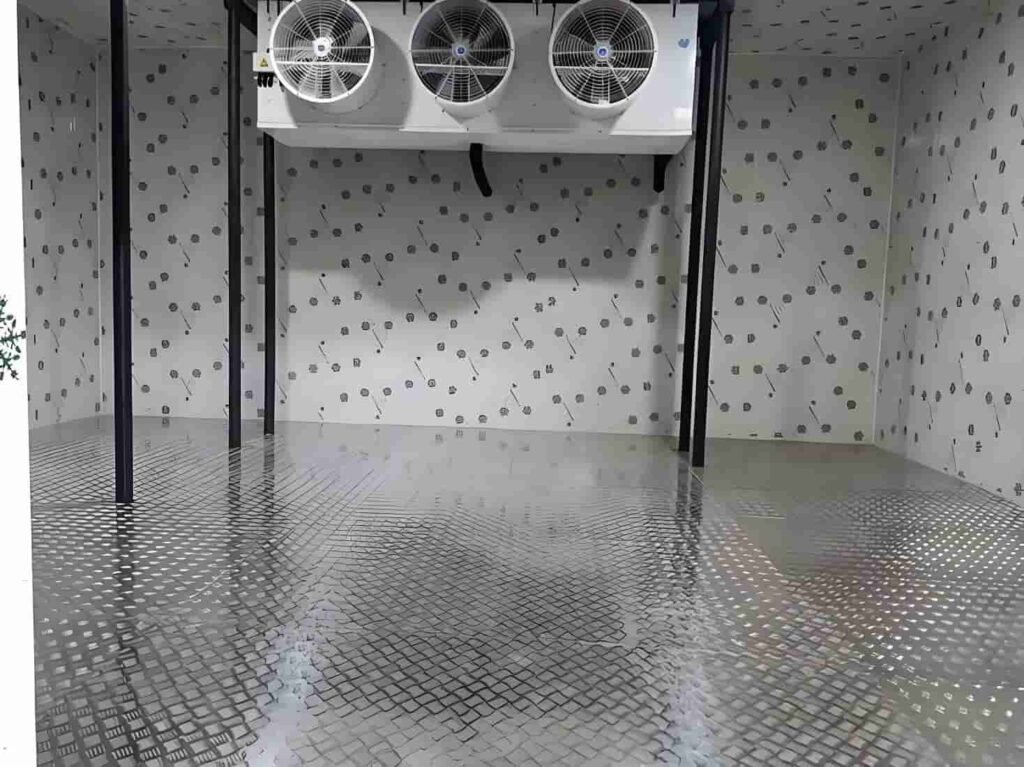
High Repair Costs:
Partial repairs cost approx. US$50~70 per square meter, while full renovations require 2-3 months of downtime, leading to significant storage revenue losses.
2.2 Safety Assurance
Risk of Structural Damage:
Floor cracking can cause refrigerant leaks, leading to explosion risks.
Poor anti-slip performance can result in forklift skidding and worker injuries, directly threaten operational safety.
2.3 Long-Term Operational Stability
Reduced Maintenance Downtime:
High-quality flooring reduces maintenance-related shutdowns. For example, a logistics company which upgraded its flooring reported a 70% reduction in failure rates over 5 years.
Differences Between Cold Room Flooring and Regular Flooring
| Comparison | Cold Room Flooring | Regular Flooring |
|---|---|---|
| Temperature | -40℃ to common ambient temperature, resistant to freeze-thaw cycles | Suitable for common ambient temperature (no low-temperature request) |
| Structural Design | Multi-layer composite (insulation layer and moisture-proof layer) | Single-layer or simple layering |
| Material Feature | Freeze-resistant concrete, XPS or PU/PIR panel | Regular cement, tiles/wood flooring |
| Load Capacity | Dynamic load (forklift) ≥3 tons/m² | Static load (furniture) ≤0.5 tons/m² |
| Construction Process | Require embedded heating cables to prevent frost heave | Regular installation |
Cold Room Flooring Classification
The classification of cold room flooring needs to combine with their use environment, functional requirements and engineering and technical features. They normally can be divided from four dimensions: material, function, load-bearing capacity and temperature:
1) By Material
The material of cold room flooring directly affects their thermal insulation, durability and cost. Common types are as follows:
| Type | Material Composition | Features | Application |
|---|---|---|---|
| Concrete Flooring | 1. Regular freeze-resistant concrete (with anti-freeze additives) | 1. High compressive strength (≥30MPa) | General cold room (-25℃ ~ 0℃) |
| 2. Steel fiber concrete (with added steel fibers) | 2. Resistant to freeze-thaw cycles (≥F200 rating) | ||
| 3. Cost-effective | |||
| Steel Structure Flooring | 1. Galvanized steel plate and PU polyurethane sandwich panel | 1. Lightweight (self-weight ≤50kg/m²) | Prefabricated cold storage, temporary cold chain facility |
| 2. Aluminum-magnesium alloy panel and VIP (vacuum insulation panel) | 2. Quick installation (modular assembly) | ||
| 3. Detachable and reusable | |||
| Composite Material Flooring | 1. Epoxy resin and quartz sand | 1. Seamless surface (anti-bacterial and moisture-proof) | Pharmaceutical cold room, food processing workshops |
| 2. Self-leveling PU polyurethane and fiberglass reinforcement layer | 2. Wear-resistant and corrosion-resistant (lifespan ≥15 years) | ||
| 3. Easy to clean and maintain | |||
| Special Material Flooring | 1. Nano aerogel insulation layer and carbon fiber concrete | 1. Ultra-low thermal conductivity (≤0.018W/m•K) | Ultra-low temperature cold room (-60℃), research cold room |
| 2. Phase change energy storage flooring (PCM materials) | 2. Self-adaptive temperature regulation | ||
| 3. Green and energy-efficient |
1.1 Parameter comparison:
Thermal conductivity: ordinary concrete (1.5W/m•K) > steel fiber concrete (1.2W/m•K) > polyurethane sandwich panel (0.025W/m•K) > aerogel (0.018W/m•K).
1.2 Cost range:
concrete (US$ 30~60/㎡) < steel structure (US$ 70~120/㎡) < composite materials (US$120~200/㎡) < special materials (≥US$200/㎡).
2) By Function
Based on the special requirements of cold room, must design flooring systems with targeted functional layers:
2.1 Thermal Insulation Type
Structural Features:
Thickened insulation layer (XPS/PU/PIR panel ≥150mm)
Thermal bridge interruption design (e.g., thermal break aluminum alloy keel)
Application:
Low-temperature freezing room (≤-25°C)
Blast freezer
2.2 Anti-Slip and Wear-Resistant Type
Technical Solutions:
Surface embossing treatment (pattern depth 1-2mm, friction coefficient ≥0.6)
With anti-slip steel sheets (galvanized steel sheet with diamond anti-slip texture)
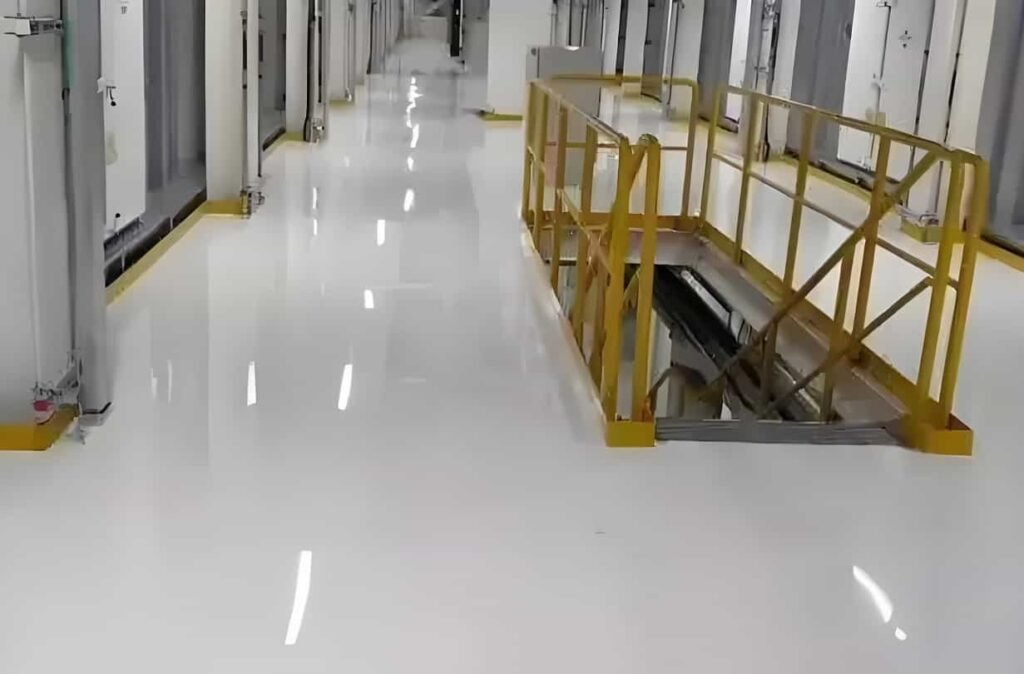
Application:
High-frequency forklift operation zones
Seafood cold chain cold room (wet environments)
2.3 Airtight and Leak-Proof Type (For Controlled Atmosphere Cold Room)
Core Requirements:
Integrated gas barrier membrane (oxygen permeability ≤5cm³/m²•day)
Seamless epoxy coating (thickness ≥3mm)
Application:
Controlled atmosphere (CA) cold room for fruits
Seed preservation
2.4 Chemical Corrosion-Resistant Type
Material:
Acid-alkali resistant epoxy resin (resistant to pH 1-14)
Polyurea elastic coating (resistant to saltwater corrosion)
Application:
Pickled food cold room
Chemical raw material low-temperature cold room
3) By Load-bearing
The cold room flooring load design needs to match the dynamic pressure of the storage equipment:
| Type | Load Standard | Structural Design Key Points | Typical Application |
|---|---|---|---|
| Light Duty | ≤1 ton/m² (static load) | 1. Single-layer rebar mesh (Φ8@250mm) | Small cold room, fruit and vegetable preservation cold room |
| 2. Concrete grade C25 | |||
| Medium Duty | 1-3 tons/m² (include forklift dynamic load) | 1. Double-layer rebar mesh (Φ12@200mm) | Meat freezer room, logistics sorting centers |
| 2. Steel fiber-reinforced concrete | |||
| Heavy Duty | ≥3 tons/m² (include intensive AGV operation) | 1. Prestressed concrete beams and steel sheet composite layer | Automation cold room, port cold chain hubs |
| 2. Foundation reinforcement (pile depth ≥5m) |
Case:
A certain e-commerce cold chain cold room uses heavy-duty flooring (5 tons/m²), and the flooring structure is–
Base layer: C35 concrete and Φ16@150mm steel mesh
Insulation layer: 200mm XPS panel (density ≥40kg/m³)
Surface layer: 4mm epoxy quartz mortar
Attention: Can withstand multi-layer shelves and 10-ton forklifts 24 hours operation.
4) By Temperature
Different temperature ranges have significantly different requirements for floor materials and processes:
| Temperature | Technical Request | Flooring Solution |
|---|---|---|
| High-Temperature Cold Room (0~10℃) | 1. Moisture-proof layer (single-layer PE film) | Concrete, PU polyurethane spray coating and epoxy top layer |
| 2. Insulation layer (100mm PU polyurethane) | ||
| Low-Temperature Cold Room (-25℃) | 1. Frost heave prevention trench (ventilation layer) | Steel fiber concrete ,electric heating system and embossed steel sheet |
| 2. Triple-layer XPS panel (150mm) | ||
| Ultra-Low Temperature Cold Room (-60℃) | 1. VIP vacuum insulation panel (thermal conductivity ≤0.007W/m•K) | Nano aerogel composite flooring and intelligent temperature control system |
| 2. Carbon fiber crack-resistant layer |
5) Other Special Classifications
5.1 By construction process:
On-site cast floor: strong integrity, suitable for large fixed cold room.
Prefabricated assembled floor: modular steel sheet / concrete sheet, construction time saved by 50%.
5.2 By environmental protection level:
Traditional floor: contain VOC coatings (such as solvent-based epoxy).
Green floor: water-based epoxy, solvent-free polyurethane (compliant with LEED certification).
Cold Room flooring Construction Process
1) Subgrade Preparation
OPERATIONAL STEPS–
1.1 Subgrade Cleaning
Remove organic matter such as humus and tree roots to a depth of ≥300mm.
Measure subgrade moisture content using a nuclear density gauge (ASTM D6938), with a requirement of ≤12%.
1.2 Crack Repair
Cracks <3mm: Inject epoxy resin grout (ASTM C881).
Cracks ≥3mm: Cut a V-shaped groove and fill with polymer repair mortar (EN 1504-3).
1.3 Gravel Layer Installation
Material: Graded crushed stone (particle size 5-40mm, mud content ≤3%, ASTM D2940).
Compaction: Layer thickness ≤150mm, compacted with a 12-ton or heavier vibratory roller for 6-8 passes.
Density Test: Sand cone method (ASTM D1556) or nuclear density gauge (error ≤1%).
1.4 Technical Parameters
Final Leveling Accuracy: ≤5mm/3m (measured with a laser level, ISO 8512).
Load-Bearing Capacity: CBR value ≥8% (tested by ASTM D1883).
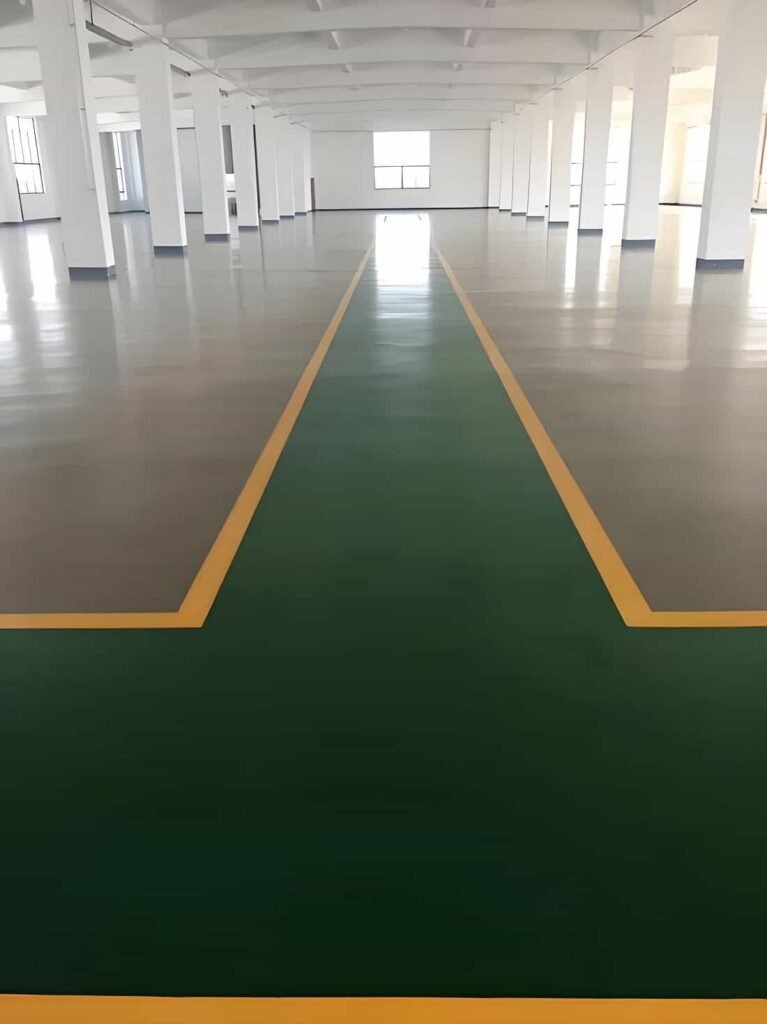
2) Vapor Barrier Installation
OPERATIONAL STEPS–
2.1 Material Selection
PE Film: Thickness 0.3mm, compliant with ASTM D4397, permeability ≤0.1g/m²•24h.
SBS Membrane: Thickness ≥4mm, flexible at -25°C without cracking (EN 13707).
2.2 Installation Process
Overlap Width: Long side ≥100mm, short side ≥150mm.
Sealing: PE film sealed using a double-track welding gun (400-450°C), SBS membrane heated with a torch (flame distance 300-500mm).
2.3 Seam Test
Vacuum Box Test (ASTM D7877): Negative pressure -54kPa, bubble observation with soapy water.
Destructive Test: Randomly cut seams; peel strength ≥4N/mm (EN 12316-1).
2.4 Key Control Points
Corner Treatment: Inner corner radius ≥50mm, outer corners reinforced with an additional layer (width ≥200mm).
3) Insulation Layer Installation
OPERATIONAL STEPS–
3.1 XPS Panel Selection
Density: ≥35kg/m³
Compressive Strength: ≥300kPa (EN 13164).
Flame Retardant Rating: B1 (GB 8624) or Class 1 (ASTM E84).
3.2 Installation Process
Staggered Layout: Offset adjacent panel seams by ≥300mm, seam gap ≤2mm.
Filling Material: Single-component PU polyurethane foam adhesive (expansion rate ≥80%, ASTM C591).
3.3 Double-Layer Insulation Reinforcement
Fiberglass Mesh: Weight ≥160g/m², alkali resistance (EN 13496).
Interlayer Treatment: Apply polyurethane primer (adhesion strength ≥0.2MPa).
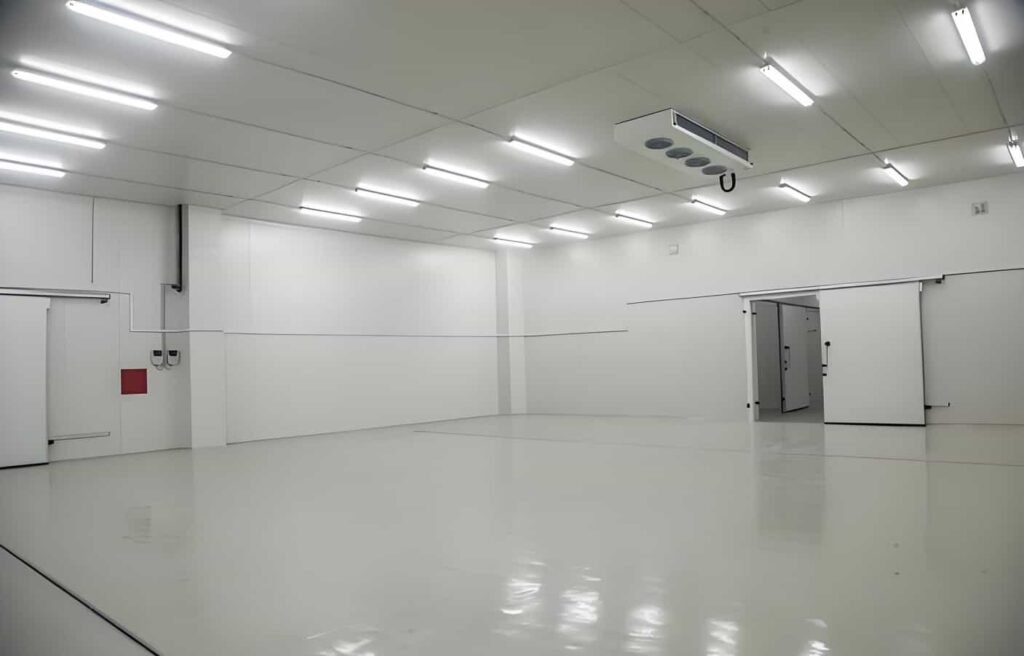
3.4 Special Handling
Equipment Foundation Perimeter: Leave a 20mm expansion joint, filled with closed-cell PE foam rod (ASTM D1056).
4) Reinforced Concrete Pouring
OPERATIONAL STEPS–
4.1 Rebar Installation
Specifications: HRB400-grade deformed steel bars (ASTM A615 Gr.60 equivalent).
Tying Standards: Tie wire density ≥3 ties/m², concrete cover thickness ≥40mm.
4.2 Concrete Mix Preparation
Mix Ratio: Water-cement ratio ≤0.45, fly ash content ≤15% (EN 206-1).
Antifreeze Agent: Calcium nitrite-based (3%-5%, ASTM C494 Type C).
4.3 Pouring and Curing
Pouring Temperature: 5-30°C (pre-cool aggregates to ≤25°C in hot conditions).
Vibration Technique: Internal vibrator (frequency ≥12,000rpm), spacing ≤500mm.
Curing: High-polymer curing membrane (ASTM C171), water spraying to maintain moisture.
4.4 Strength Testing
7-Day Strength: ≥70% of design strength (cured per ASTM C31).
5) Surface Finishing
I. Epoxy Self-Leveling (Food-Grade)
5.1 Base Preparation
Blasting Treatment: Cleanliness level Sa2.5 (ISO 8501-1).
Moisture Content: ≤4% (CM test, ASTM F1869).
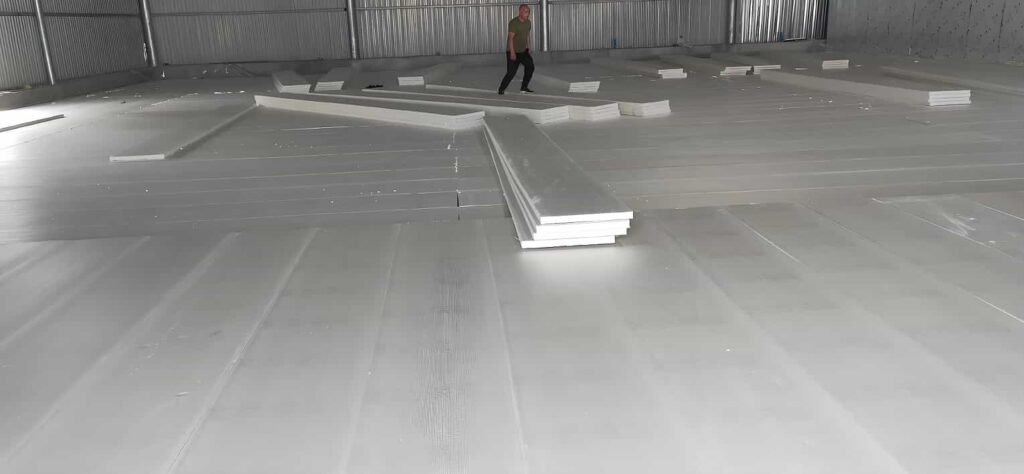
5.2 Coating Application
Primer: Solvent-free epoxy (thickness 0.2mm, surface resistance ≥1×10⁸Ω).
Intermediate Coat: Quartz sand epoxy mortar (aggregate size 0.3-0.8mm, thickness 1.5mm).
Top Coat: Self-leveling epoxy (thickness 2mm, wear resistance ≤50mg/1000r, ISO 5470).
II. Anti-Slip Stamped Finish (Industrial-Grade)
5.3 Stamping Process
Embossing Timing: 1-2 hours before final concrete setting (penetration resistance 3.5MPa).
Texture Depth: 1.5-2mm (triangular wave pattern, friction coefficient ≥0.65, DIN 51130).
5.4 Sealing Treatment
Penetrating Sealant: Silane-based (absorption rate ≤5%, EN 1504-2).
Cold Room Flooring Quality Control
The quality control of cold room flooring must run through the entire cycle of material selection, construction process and final acceptance, combining international standards and engineering practices to ensure the floor performance meets the requirements of strict working conditions. The following is a detailed quality control plan:
1) Material Test
The material properties of cold room flooring directly affect the lifetime of the floor and energy efficiency, so must be strictly tested according to international standards:
| Test | Test Standard | Qualified Criteria | International Reference Standards |
|---|---|---|---|
| Insulation Panel | |||
| Density | ASTM C303 (measurement of dimensions and mass by cutting method) | ≥35kg/m³ | EN 13164 (EU) |
| Thermal Conductivity | ASTM C518 (heat flow meter method, temperature difference of 20℃) | ≤0.028W/(m·K) | ISO 8301 (International) |
| Moisture Content | ASTM C208 (oven-drying at 105℃ until constant weight) | ≤1% | BS EN 12087 (UK) |
| Compressive Strength | ASTM D1621 (compression rate of 5mm/min) | ≥300kPa (for heavy-duty cold room) | EN 826 (EU) |
| Concrete | |||
| Compressive Strength | ASTM C39 (28 day standard curing test block) | ≥30MPa | EN 12390-3 (EU) |
| Freeze-Thaw Resistance | ASTM C666 (50 freeze-thaw cycles, temperature range -18℃ ~ 4℃) | Mass loss ≤5% | ISO 4848 (International) |
| Chloride Ion Content | ASTM C1218 (titration method) | ≤0.06% (to prevent steel reinforcement corrosion) | EN 206-1 (EU) |
International certification requirements:
Insulation panels must provide CE certification (EU) or UL certification (North America).
Concrete admixtures must comply with REACH regulations (EU) or EPA standards (USA).
2) Construction Monitor
The construction process requires real-time monitoring of key parameters to ensure the process meets the design requirements:
| Monitor Item | Test Tool and Method | Control Standard | Recording Frequency |
|---|---|---|---|
| Flatness | Laser level (Germany Leica Rugby 610, accuracy ±1.5mm/50m) | Permissible deviation ≤3mm/2m | 1 point per 10㎡ |
| Joint Sealing | Helium leak detector (USA INFICON Whisper, sensitivity 1×10⁻⁶ Pa·m³/s) | Leakage rate ≤1×10⁻⁶ Pa·m³/s | 1 random check per 20m of joints |
| Rebar Spacing | Steel ruler measurement and image recording | Φ12@200mm, deviation ≤±10mm | 5 random checks per 100㎡ |
| Concrete Slump | Slump cone test (ASTM C143) | 120±20mm (for pumped concrete) | 1 test per truckload |
| Curing Temperature & Humidity | Temperature and humidity logger (HOBO MX2301, accuracy ±0.5℃) | Temperature 10-25℃, humidity ≥90% | Continuous monitor, recorded every hour |
Key control points:
After the insulation layer is laid, require infrared thermal imaging scanning (FLIR T1030sc) to detect the hollowing rate ≤1%.
When pouring concrete, the temperature entering the mold is at 5-30℃ (ASHRAE 90.1 requirement).
3) Acceptance Criteria
The final acceptance of cold room flooring requires the integration of international standards and project technical specifications, mainly included the following contents:
| Acceptance Item | Test Method | Standard Request | International Reference Standard |
|---|---|---|---|
| Thermal Insulation Performance | Heat flow meter method (ISO 8301) | Heat transfer coefficient ≤0.4W/(m²·K) | IIR (International Institute of Refrigeration) Standard |
| Compressive Strength | Rebound hammer (Switzerland Proceq SilverSchmidt, error ±3%) and Core sampling test (ASTM C42) | ≥30MPa (28 days) | ACI 318 (USA) |
| Moisture Barrier Integrity | Vacuum negative pressure test (ASTM D7877, -54kPa) | No leakage or bulging | EN 13859-2 (EU) |
| Surface Slip Resistance | Pendulum friction tester (UK Portable Skid Tester, EN 13036-4) | Friction coefficient ≥0.6 (dry) / ≥0.4 (wet) | OSHA 1910 (USA) |
| Environmental Compliance | VOC detection (Gas Chromatography, ISO 16000-6) | Epoxy surface VOC ≤50g/L | LEED v4.1 (International) |
Acceptance document requirements:
3rd-party inspection report (such as SGS, TÜV, BV).
Material CE/UL/FDA certificate.
Construction process video record and hidden engineering certification sheet.
4) Special Requirements for International Projects
4.1 EU market
Require EPD environmental declaration (EN 15804).
Concrete carbon footprint ≤300kg CO₂/m³ (EN 16757).
4.2 North American market
Fire rating Class 1 (ASTM E84).
Anti-slip coefficient ≥0.5 (OSHA 1910.22).
4.3 Middle East/Southeast Asia
Salt spray resistance test (ASTM B117, 500 hours without corrosion).
Anti-ultraviolet aging (QUV 2000 hours, color difference ΔE≤3).
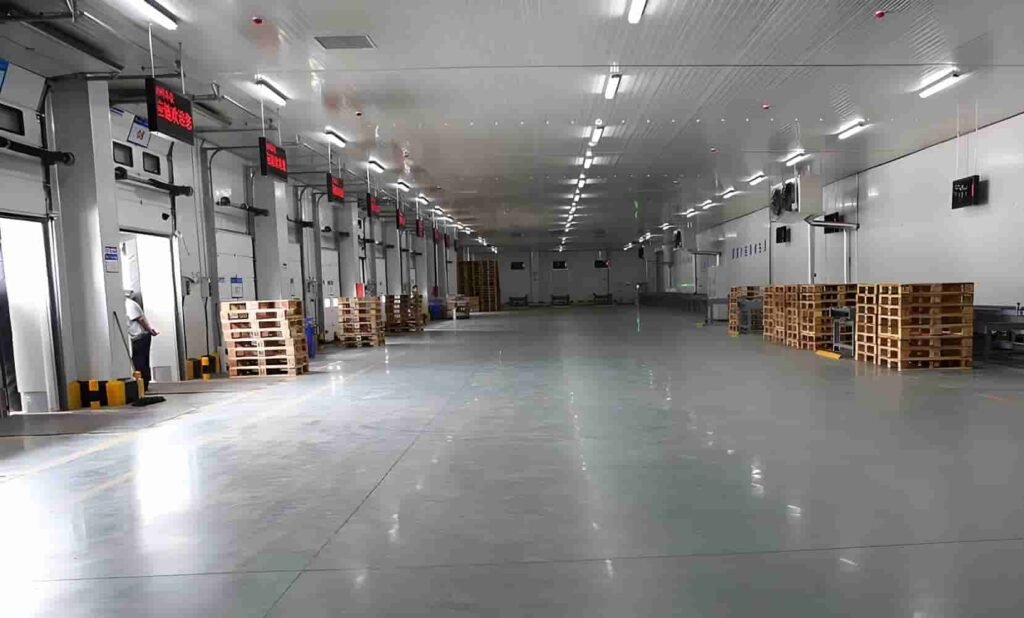
5) Quality Problem Handling Process
5.1 Defect Identification: Locate the problem area through infrared thermal imaging and ground penetrating radar (GPR).
5.2 Cause Analysis: Laboratory retests material properties and reviews construction records.
5.3 Repair Plan:
Hollow insulation layer: Drill holes and inject PU polyurethane foam (ASTM C1620).
Crack repair: V-groove cleaned and filled with epoxy mortar (ASTM C881).
5.4 Re-test: After repair, re-test according to the original standard and issue a supplementary acceptance report.
Conclusion
Cold room flooring is far more than just a “concrete surface”—it is a sophisticated system integrating material science, structural mechanics, and thermal engineering.
Its performance directly impacts the cold room’s energy costs, cargo preservation quality, and personnel safety. As cold chain logistics evolve toward ultra-low temperatures (-60°C) and automation, which will place a higher demands on flooring for extreme cold resistance and high-frequency impact durability.
Companies must involve professional teams in the design and construction phases to prevent the risks associated with the short-sighted approach of prioritizing heavy equipment while neglecting flooring quality.
Any comments?
Welcome leave a message or repost.



